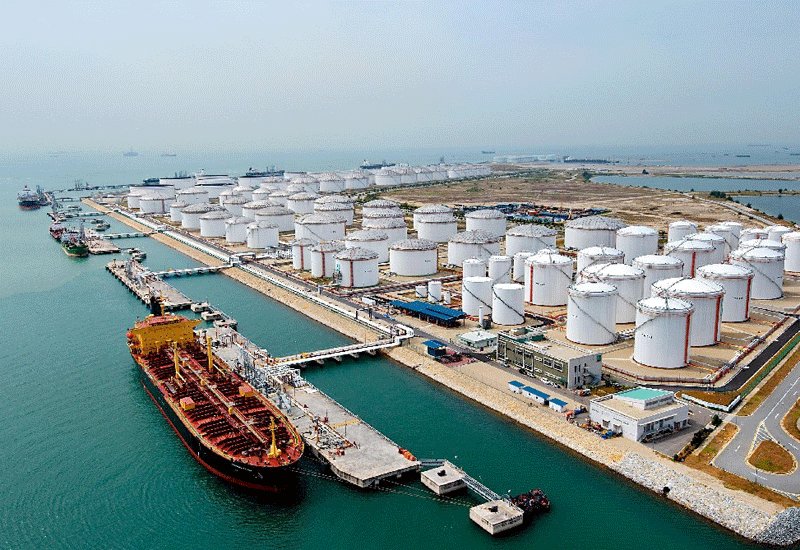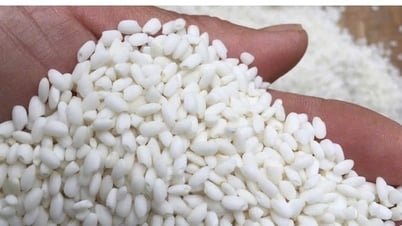Saudi Arabia said on June 4 that it would reduce production by about 10%, equivalent to 1 million barrels per day, to 9 million barrels per day in July. This is considered a low output level, because the country's output capacity is up to nearly 12 million barrels per day.
With other OPEC+ members maintaining current supply curbs until the end of 2024, the alliance's total cut quota has been slashed to 4.7 million barrels per day (about 5% of global capacity) in July.
However, many OPEC+ members have long missed their output targets for years, so the actual reduction could be much lower.
In addition, demand for this commodity is growing moderately due to economic uncertainty, while production from non-OPEC countries such as the US, Canada, Brazil, Norway and Guyana remains stable, helping to limit supply concerns in the Asian region, according to S&P Global.
Market is less volatile
In South Korea, two major refiners said there will be no time-bound crude allocation cuts or adjustments to Saudi Arabian barrels in July, as Saudi Aramco (one of the top oil producers in Saudi Arabia) usually prioritizes Asian customers.
“So far, we have not been informed of any changes to Saudi crude loadings in July,” S&P Global quoted a manager at a major South Korean refinery as saying.

Saudi Arabia's announcement of the production cut was made on June 4, when the country's Energy Minister Prince Abdulaziz bin Salman attended the OPEC+ meeting in Vienna, Austria. Photo: CNN
According to a representative of a Thai state-owned oil refinery, the amount of crude oil that the country imports from Saudi Arabia in July and the period after is expected to remain stable.
“Chinese and Indian refiners are buying much less from Saudi Arabia these days, so Saudi Aramco’s additional 1 million barrels per day of production cuts in July are unlikely to change supply to other major buyers, at least in East Asia,” the manager said.
Also, Saudi Arabia's production cuts will have little impact on India, as Russia's share of total Indian imports has now increased to 42%.
Initial data showed that Russian crude oil imports into Indian refineries in May hit an all-time high of nearly 2.0 million barrels per day, surpassing purchases from Iraq and Saudi Arabia combined. These imports are expected to account for 40% to 45%, or about 2 million to 2.5 million barrels per day, in the coming period.
In China, Russian crude oil imports from January to April 2023 increased by 27% year-on-year to 1.98 million barrels per day.
Export opportunities
Saudi Arabia's latest move opens the door for U.S. and Latin American exports to Europe and Asia, and bolsters confidence among U.S. producers that Saudi Arabia will offer lower prices if oil demand falls due to a recession, analysts said.
Exports account for about a third of US production, even as the country's crude inventories fell to near a record low of 815 million barrels.
Saudi Arabia's willingness to cut output deeper - after an earlier cut of 500,000 barrels per day came into effect in May - will hit the kingdom's exports, which typically fall in the summer.

Saudi Arabia's production cuts will have little impact on Asian companies' imports. Photo: Tehran Times
“The important thing is that they cut back in the summer, when domestic demand is at its peak. I think that means they’re going to have to cut back on exports,” said Paul Sankey, an independent analyst at Sankey Research in New York.
The production cuts will certainly weigh on prices, but supplies from other producers are also rising. U.S. crude sales to Asia have also been growing well since the start of the year, which should ease some supply concerns for the region, S&P Global said.
US crude oil exports rose 1.5 million barrels per day (bpd) year-on-year to a record monthly high of 4.8 million bpd in March.
Asia accounted for 43.6% of U.S. crude exports in March, down from 44.5% in February but up from 43% a year earlier. China was the top destination for U.S. crude in March, averaging 1.0 million barrels per day, according to S&P Global data .
Nguyen Tuyet (According to Reuters, S&P Global)
Source


![[Photo] Prime Minister Pham Minh Chinh chairs conference on anti-smuggling, trade fraud, and counterfeit goods](https://vphoto.vietnam.vn/thumb/1200x675/vietnam/resource/IMAGE/2025/5/14/6cd67667e99e4248b7d4f587fd21e37c)
































































































Comment (0)